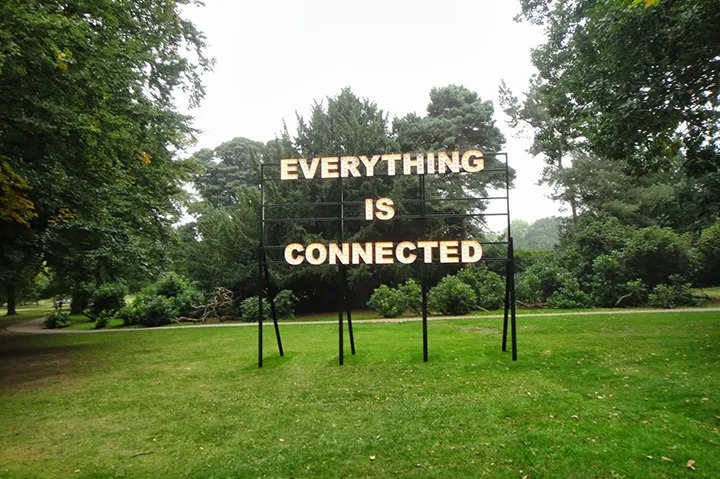Landscape Architecture and Visual Arts

„The interest of the natural sciences in non-verbal languages is growing and, consequently, the question as to an understanding of art as language which communicates with a public on a particular issue is gaining ground in interdisciplinary dialogue.“ In his influential book The end of the history of art?, the art historian Hans Belting raised this important subject in 1983.
One of the main issues of our age is the disturbed relationship of man to nature and the ensuing world-wide threat to the ecological balance. Our society is still seeking a technological solution to a crisis generated by this same technology. The realisation that the crisis facing the environment is being caused by man, who is not just a „factor“ to be predicted by rational means and researched by science, but is also a being perceiving through his senses and often acting intuitively, is only very gradually gaining acceptance. It is slowly being acknowledged that using scientific objectivity to research the causes of the growing destruction of our environment will be of scant avail unless accompanied by efforts to ensure that the established findings can also be understood and experienced subjectively.
Ultimately, the question as to whether we can overcome ecological and social crises is primarily a question of human behaviour. In the past few years, this realisation has led to calls for an adequate design language in public space. The purpose of such a contemporary language would not only be to achieve greater public discussion on a changed conception of nature, but also to contribute to heightening our perceptivity, which increasingly threatens to be stifled by the mass media and mass tourism.
Based on this background, Professor Dr. Udo Weilacher is continuously researching about contemporary and classical modern landscape architecture (20th century) since 1997 with special interest on the interface between landscape architecture, architecture and visual arts. The results of many research projects at the ETH Zürich (1997-2002) and at the Leibniz University in Hannover (2002-2009) in the last 15 years were published internationally in many books and magazines. This research field will be expanded at the TU Munich in close cooperation with the CGL, Research Centre for Garden Design and Landscape Architecture, Leibniz University Hannover, were Weilacher is a member of the international scientific advisory board.
Another important topic in the chair's research portfolio is connected with Prof. Dr. Udo Weilacher's commitment to the ELAN-Network of European sculpture gardens. Here, for many years he is acting as expert advisor, for example in research grant applications. This exchange also informs the chair's teaching program. At the focus of this collaboration is not merely the discussion of contemporary forms of landscape-related art. Rather, the specific social relevance of sculpture centers and their role in supporting people in deprived regions through different activities and the experience of art is being explored.